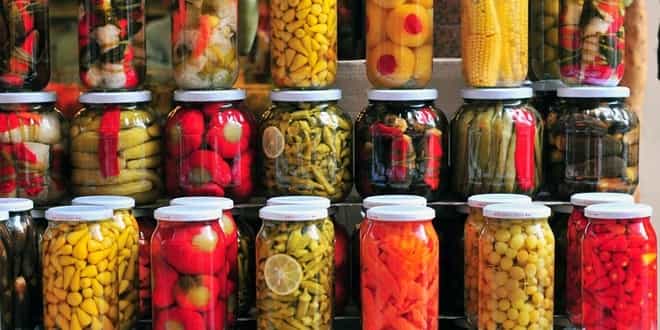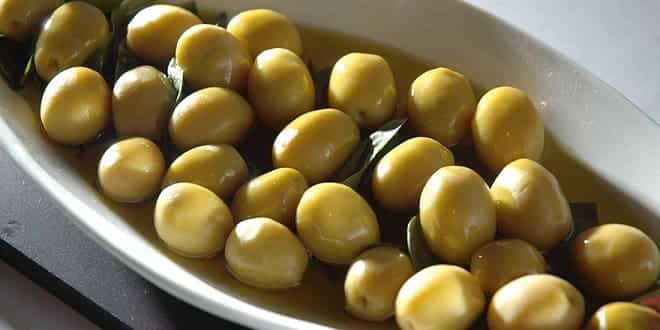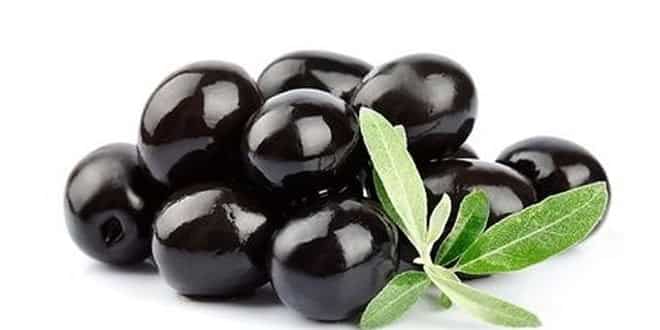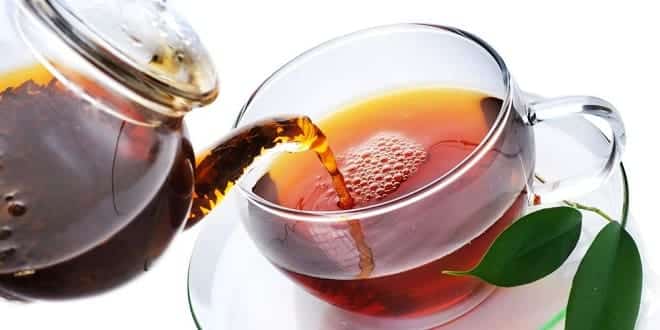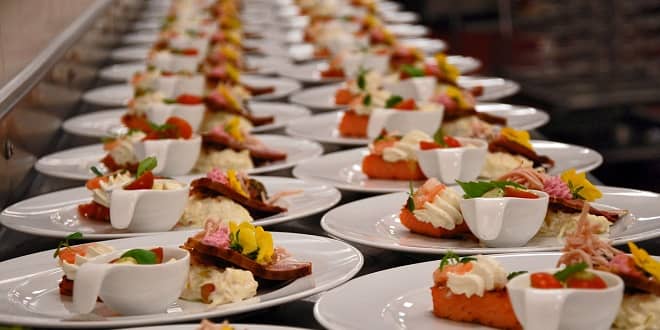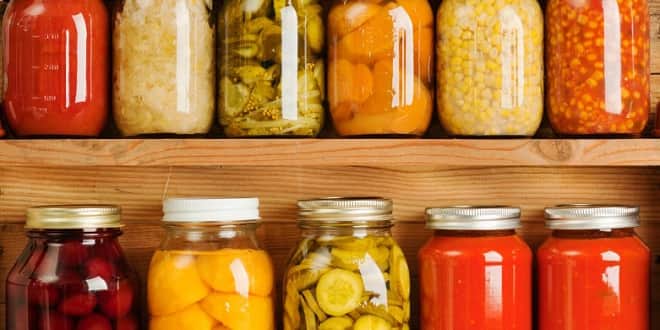Fermentasyon Teknolojisi
-

Pickling Presentation
PICKLING An important food preservation system combines salting to selectively control microorganisms and fermentation to stabilise the treated food materials. the oldest, and most successful, method of food preservation known to humans The process when applied to vegetables is called pickling. When applied to meat it is called curing. a major form of preservation because it: (1) yields desirable organoleptic qualities; (2) provides a means for extending the processing season of fruits and vegetables; (3) requires relatively little mechanical energy input. salt, temperature, and anaerobiosis creates environment necessary for a successful…
-

Sofralık Zeytin Fermantasyonu ( MEGEP )
1. SALAMURA HAZIRLAMA 1.1. Salamura Bileşenleri 1.1.1. Tuz 1.1.2. Su 1.2. Salamura Karışımı 1.2.1. İstenen Yoğunlukta Salamura Hazırlama 1.2.2. Farklı Yoğunlukta Salamuranın Ürüne Etkisi 1.3. Sirkülasyon Pompası 1.3.1. Görevi 1.3.2. Yapısı 1.3.3. Çeşitleri 1.3.4. Kullanımı 1.3.5. Temizliği ve Bakımı 2. FERMANTASYON 2.1. Laktik Asit Fermantasyonu 2.2. Maya Fermantasyonu 2.3. Fermantasyon Tankları ve Havuzlar 2.4. Zeytinlerin ve Salamuranın Tanklara Alınması 2.5. Transfer Pompası 2.5.1. Görevi 2.5.2. Yapısı 2.5.3. Çeşitleri 2.5.4. Kullanımı 2.5.5. Temizliği ve Bakımı 2.6. Fermantasyon İçin Gerekli Şartlar 2.7. Fermantasyonun Zeytine Etkisi 2.8. Fermantasyonu Olumsuz Etkileyen Şartlar 2.9. Saf…
-

Table Olive Fermentation
Özet Türkiye dünyanın en büyük zeytin üreticilerindendir. Sofralık zeytin fermentasyonu, salamuranın tuz yoğunluğuna, pH’ sına, uygulanan ön işlemlere, mikrofloranın komposizyonuna ve havalandırılma yapılıp yapılmadığına bağlı olarak zeytinde gaz ceplerinin oluşmasına ve zeytinin yumuşamasına, büzüşmesine, ve kısa raf ömrüne neden olabilir. Düşük tuz yoğunluğu, pH kontrolu ve havalandırma kalitenin iyileşmesine ve raf ömrünün uzamasını sağlamaktadır. Starter kültür uygulamaları kaliteyi daha da iyileştirebilir. …
-

Tea Fermentation
TEA FERMENTATION • The Chinese sources claim that the first person who drank was the emperor Shen-Nung who lived around 2700 BC. • tea manufacture is one of the oldest biotechnologies developed and practiced by mankind. • Many different types of tea are marketed in the world today. • Turkey : 160,000 ton black tea production and consumption China Teas (Camellia sinensis var. sinensis) • slow-growing ( grow to a height of 4–6 m if unattended) • dark green leaves which are smooth with a matt surface • resistant to cold • found in China, Japan, the former Soviet Union, Turkey, Iran, and –the northern, higher-altitude growing areas of India. • to…
-

Tea Fermentation Presentation
Tea manufacture is one of the oldest biotechnologies developed and practiced by mankind. Turkey : 160,000 ton black tea production and consumption China Teas (Camellia sinensis var. sinensis) -slow-growing ( grow to a height of 4?6?m if unattended) – resistant to cold – in China, Japan, Turkey, Iran -to produce delicately flavored tea -low-yield Assam Teas (Camellia sinensis var. assamica) -faster-growing (12?15?m ) -larger glossy elliptical leaves -less resistant to cold -much higher-yield – less delicately flavored Types of tea green tea ( not fermented ) oolong and pouching teas ( partially…
-

The Use of Gelatine In Wine Fining
SYNOPSIS The basic chemistry of protein is developed to enable an understanding of its fining reactions in beverage clarification. Results of various European and South African wine fining experiments are presented. The efficiency of both very high and very low molecular weight gelatins are discussed and it is proposed that protein isoelectric point is a more important attribute in determining fining performance than is the Bloom strength of the gelatine. Introduction Beverages like wine, cider and unfermented fruit juices contain insoluble matter which imparts a haze to the beverage which is often not practical to remove…
-

Traditional Fermented Food Presentation
TRADITIONAL FERMENTED FOODS Reason for studying oriental fermented foods: Different from western foods (taste, texture, flavor and appearance.) microbiologicaly different from western foods: (mixed culture of yeast, bacteria, and mold.) cheap and nutritious: large number of people consume. too many things to modernize in plants. receiving increasing attention of western consumers. hİghly nutritive because; Complementary effect of animal and plant proteins İncreased protein efficiency ratio and digestibility Synthesis of vitamins Shorter cooking time Desirable enzymes are produced Soy sauce -dark -brown liquid, salty, pleasent aroma – made by fermenting soybean, wheat…
-

Turşu Teknolojisi ( Dr. Halil TOSUN )
1o. Ünite Dr. Halil TOSUN Turşu Teknolojisi İnsanların gıda maddelerini uzun süre saklayabilmek ve az ya da hiç bulunmadıkları yer ve dönemlerde, bu ürünlerden yararlanabilmek için geliştirdikleri dayandırma yöntemleri içinde en eskilerinden biri turşu yapımıdır. Turşunun en yaygın tanımı, “sebze ve meyvelerin belli konsantrasyonlarda tuz içeren salamura veya kendi öz suları içinde laktik asit bakterilerince fermente edilmesiyle oluşan laktik asidin ve ortamdaki tuzun koruyucu etkisi sonucu dayanıklılık kazanan bir ürün” şeklindedir. TSE 11112’ye göre h ıyar turşusu ise, “kornişon ve maltepe çeşidi ile benzeri hıyarların (Cucumis sativus), sirke ve/veya salamura…

